This April, after Eyjafjallajökull had thwarted a planned visit of an old friend in Spain and stranded us in my native Germany, my partner Deb and I spontaneously decided to take my dad’s car to explore relatively nearby Italy instead. Our first stop on our impromptu tour was Cinque Terre, a UNESCO World Heritage Site and National Park consisting of five villages located along beautifully terraced hillsides on the Ligurian coast.
While it was bound to be a marvelous vacation, I did not expect to be stepping into a model study for ecocities and villages, which inevitably put me in trigger-happy and note-taking research mode…


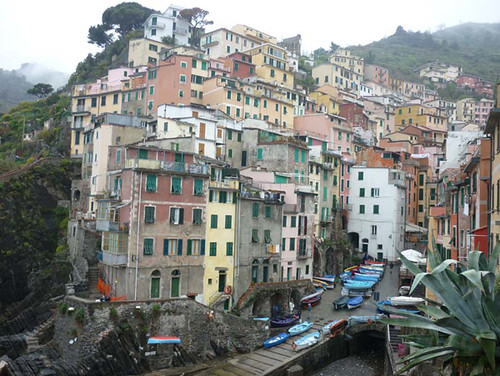
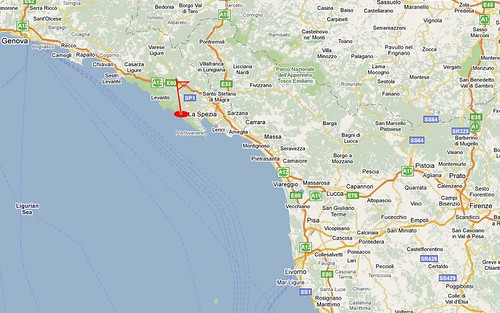
The Cinque Terre is noted for its beauty. Over centuries, people have carefully built terraces on the rugged, steep landscape right up to the cliffs that overlook the sea. Part of its charm is the lack of visible “modern” development. Paths, trains and boats connect the villages, and cars cannot reach it from the outside.
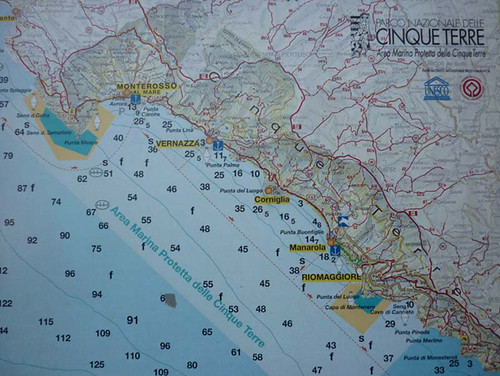
We parked our car in La Spezia and took the 10 minute train ride to the southern most of the 5 “lands,”
Riomaggiore
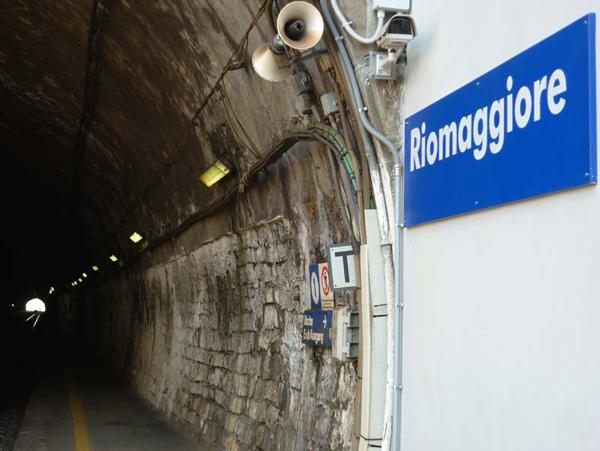
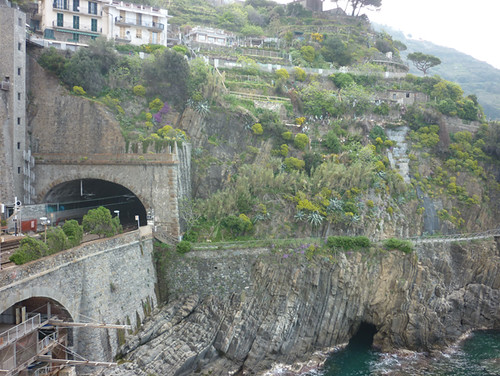
We got to Riomaggiore in the evening, and after asking around a bit found a really nice room on Via Colombo, the main street. Here’s our view that night and the next morning…
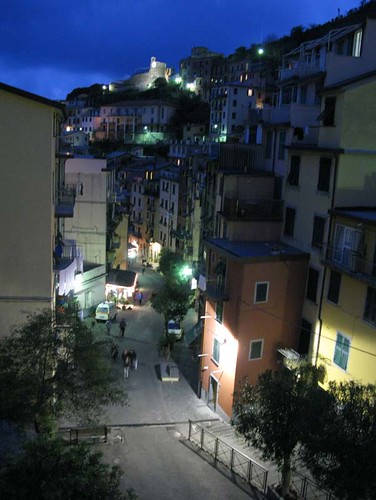
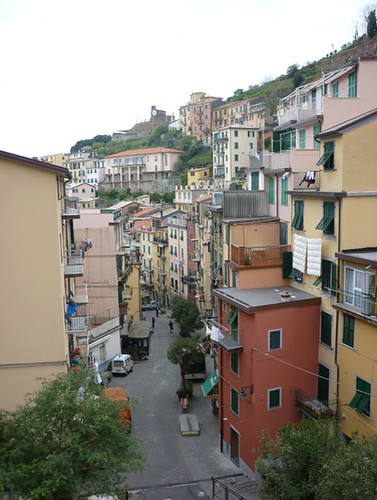
A look at Riomaggiore gives a good overview of some of the key elements of ecologically smart settlements: Mixed use, including restaurants, retail, residences and public seating all accessible by foot, made possible by high density, vertical building with an aesthetic that blends into the natural environment, interspersed with greenspace and agriculture.

UNESCO World Heritage Site
Justification for InscriptionThe Committee decided to inscribe this site on the basis of criteria (ii), (iv) and (v), considering that the eastern Ligurian Riviera between Cinque Terre and Portovenere is a cultural site of outstanding value, representing the harmonious interaction between people and nature to produce a landscape of exceptional scenic quality that illustrates a traditional way of life that has existed for a thousand years and continues to play an important socio-economic role in the life of the community.
It was time to put on our walking boots and go exploring the neighborhood. We just kept marveling at the buildings. There’s so much character to the architecture, who wouldn’t trade in their single family home for a cozy apartment in this building? (and yes, even the laundry looks like art, plus no energy is ever wasted on driers)
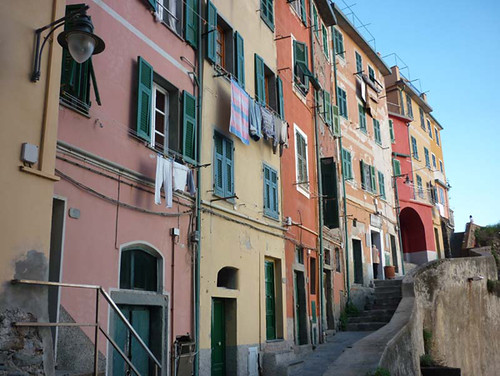
The narrow alleyways that lead up to the eastern end of town were clearly designed for foot traffic, but it’s not like residents are stuck in the middle ages: It’s just that cars are much further down on the list of convenient means to get around, and each added vehicle requires quite some resourceful spatial deliberation…
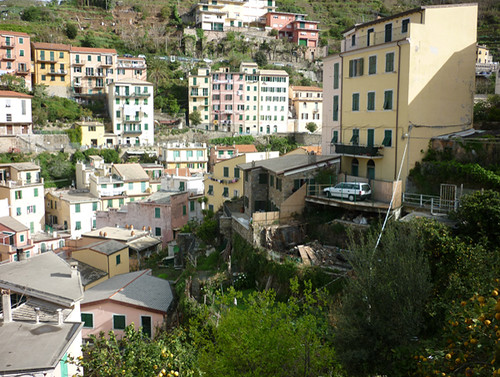
It’s amazing how easy and fun walking uphill can be when you’re rewarded with this view…
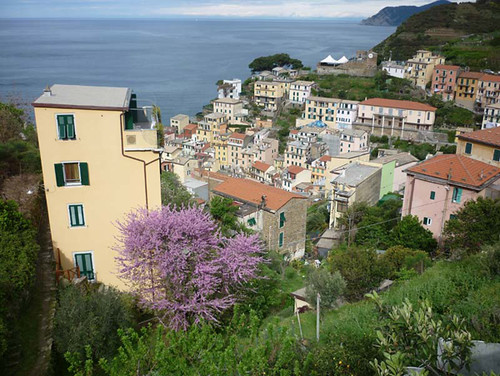
Up there, nestled among the terraced vineyards, Riomaggiore’s ancestors and spirits reside. I liked that Cinque Terre’s cemeteries are solar powered…
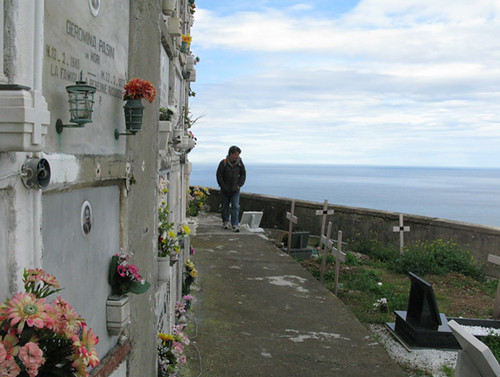

Next, it was time to explore the neighbor village, Manarola. One way to get there is along the cliffs, on Via dell’Amore, or Lovers’ Lane.
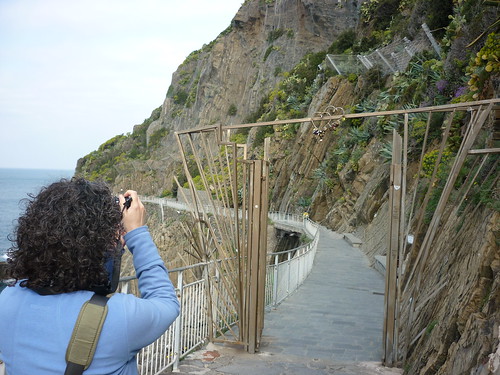
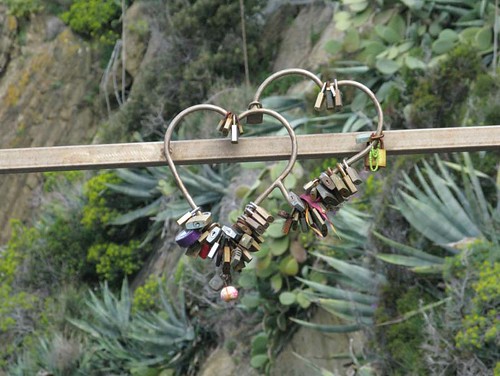
Yes, Italians are romantics: Young lovers looking to eternalize their love come to Via dell’Amore, write their names on the lock and close it on a fence along the trail. Who knows, perhaps that’s what it takes to create such inspired and intelligently designed towns.
We know that Italians also know a thing or two about food, and more on that further down. For now, we just had to stop here for tea and a snack…
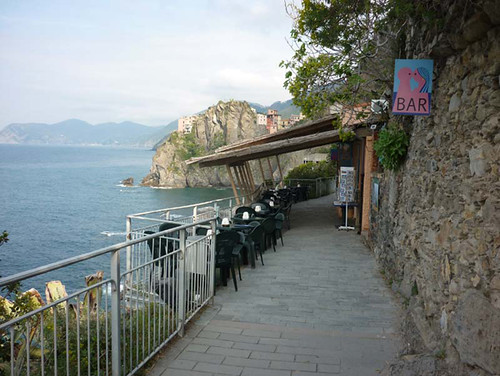
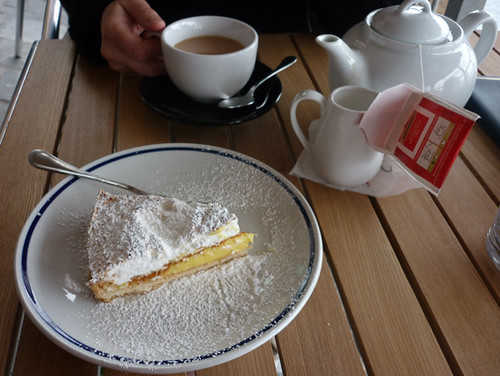
Then, our first glance at Manarola from the distance. We could’ve taken the train, but we wouldn’t have caught this view,
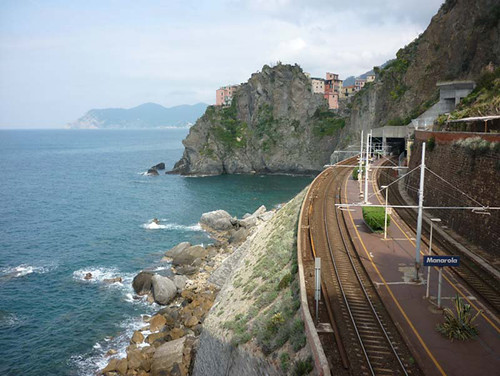
or these…


Manarola!
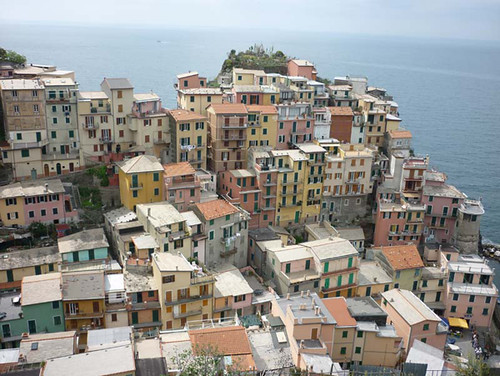
It was still early when we got “downtown”, some locals were just having their morning chat,
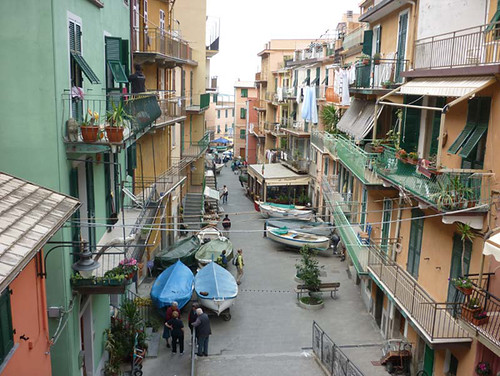
others hadn’t even gotten out of bed,
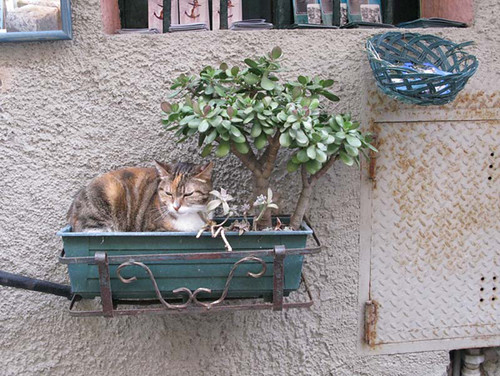
although the fishermen had already returned from work.
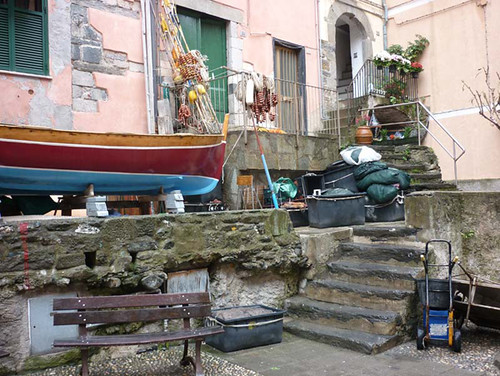
We decided to explore Manarola’s delicious residential labyrinth,
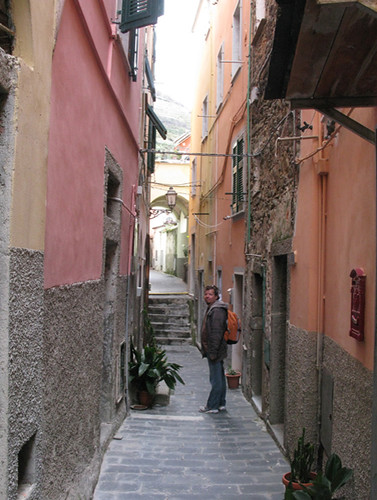
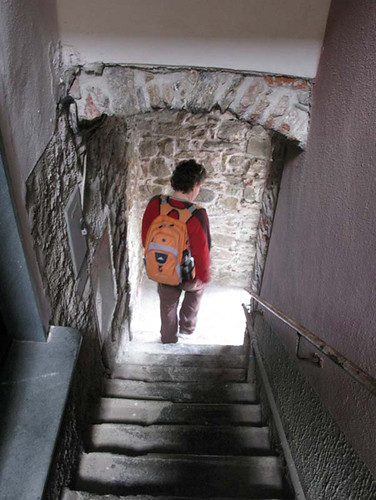
and then worked our way up
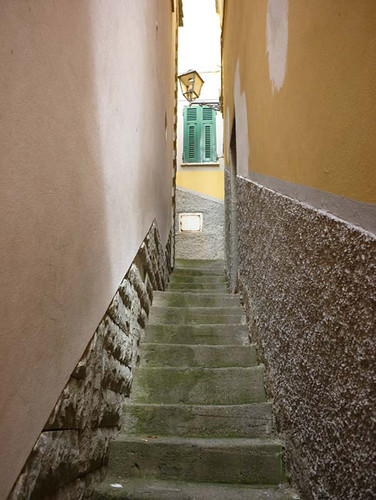
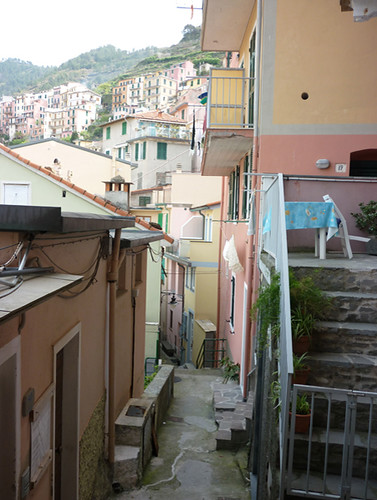
toward the centers of the local economy, the hillside terraces:
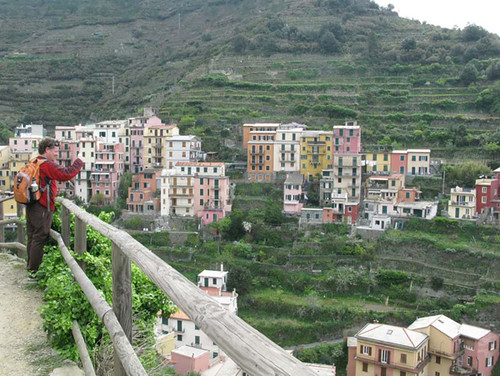
What I love about Cinque Terre is that despite its special status and attraction this is not some sort of museum or Disneyland, a theoretical sketch, an academic exercise, a bad case of melancholy, or a back to the land pipe dream. This is a living breathing community, and while the summer time does bring a boost to the hospitality and tourism industry, the main economic driver continues to be its agriculture.
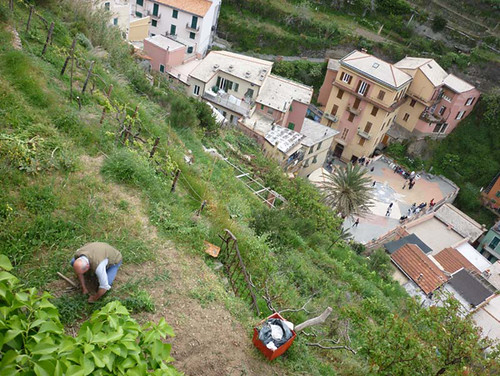
The grapes of the Cinque Terre are used to produce two locally made wines. The eponymous Cinque Terre and the Sciachetrà are both made using Bosco, Albarola, and Vermentino grapes. Both wines are produced by the Cooperative Agricoltura di Cinque Terre (“Cinque Terre Agricultural Cooperative”)
In fact, farming is not only these communities’ economic base but key to their very survival: To counter erosion and environmental damage from abandoned hillsides, a farmer collective named Cooperativa Sentieri e Terrazze has been restoring this precious farm land with orchards, olive trees, vineyards, and vegetables, with focus on biodiversity and organic farming methods.
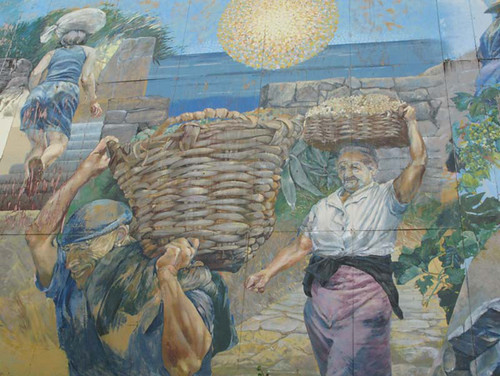
Hey, this is making me hungry. To be honest, I don’t remember which town we had this meal in because we pretty much had pizza and pasta twice a day, but to be sure, it was absolutely divine!
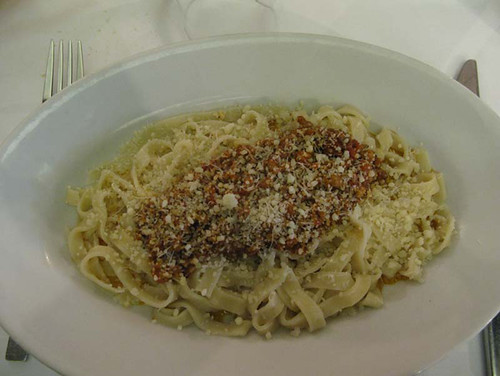

Then it was off to Vernazza
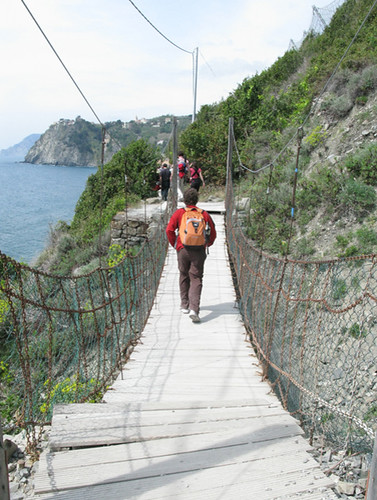
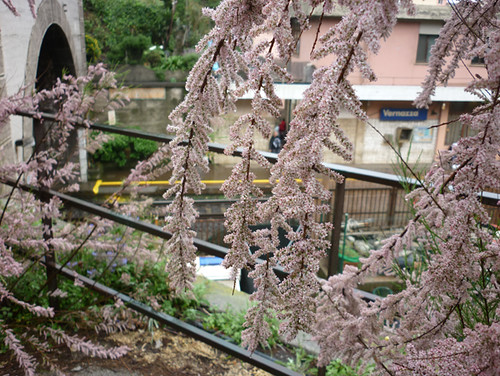
This place is
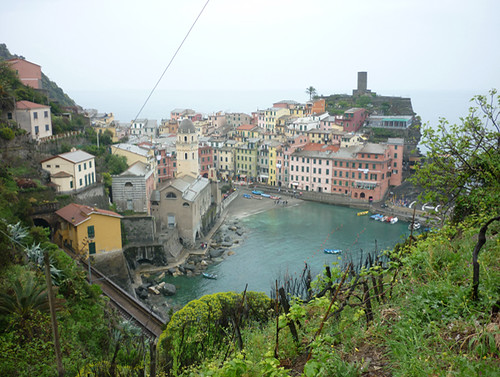
something else!
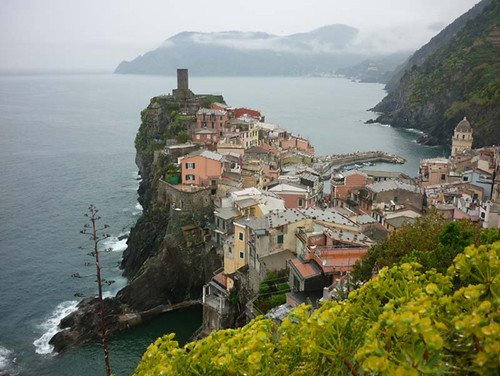
The sun was now setting over the Ligurian sea, and I have to say, after the ground we’d covered on our first day we were both pretty grateful for that train ride back to our home base in Riomaggiore.
There, over beer, wine, and a ridiculously phenomenal serving of bruschetta,
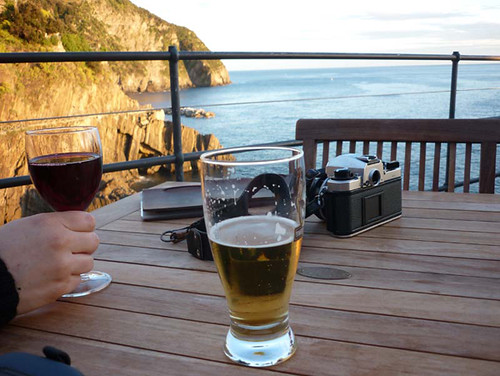
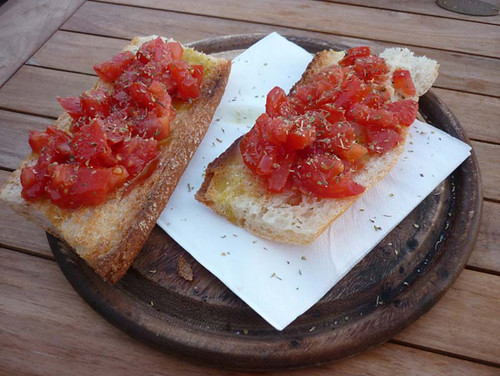
we watched the sun go down over one of the most magical and inspiring places on earth!

photos by Debra Baida & Sven Eberlein
What on Earth is an Ecocity?
Epilogue
Cinque Terre is obviously a pretty unique place, with its own inimitable geography, history, and culture. The point of looking at Cinque Terre from an ecocity perspective, however, is not to get an exact cutout and place it somewhere else, but to see which elements of layout, interaction, transportation and architecture make it gel so well with its natural environment, and thus sustainable. Think about it: If Cinque Terre is unique, that means whatever town or city you’re reading this from is unique, too. Each settlement has its own challenges as well as natural blessings, and yet so often in our modern world we don’t even know about the gifts of the land we inhabit. Chances are there’s a creek flowing underneath us and we don’t even know it, because at some point in the past urban planners decided that it would be most efficient to get it out of the way and culvert it underground. Maybe there’s a highway that divides your town, turning what used to be a ten minute walk to the store into a five minute drive. The list goes on and on with the kind of shortsighted fossil-fuel dependent urban design that at one point, during times of seemingly endless oil supplies, seemed to make sense, but that we now know is destroying the planet’s ecosystem, and by extension, us. The lesson I took from Cinque Terre and that I believe to be universal in its application is to open our eyes to our natural habitat and reacquaint ourselves with its patterns and offerings before modifying existing infrastructures or adding new ones. We need to get people into our cities’ and towns’ planning departments who know at least as much about “what grows here” and passive solar architectural techniques as they do about traffic flow and zoning laws. For that to happen, we, the denizens of our cities and towns, have to use our intuition and imagination, rediscover the natural habitat and cycles we’re part of, and begin to envision the kind of place we want to live in. If we want planners, governments and politicians to be visionary, then we the people must have a vision. And it is places like Cinque Terre that inspire visions.

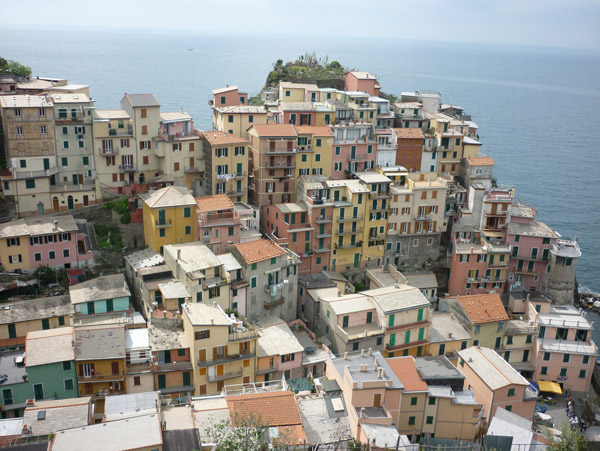






This photolog is easily one of the most breathtaking and inspiring that I have ever seen! Your journey (and camera) are to be envied and–hopefully–emulated. Human beings certainly are inspiringly creative when it comes to homebuilding in tight spaces (have you seen some homes in Japan?) I think everyone ought to have a chance to explore the world outside their hometown and home country at least once.
May I use one of your photographs on my blog? I like to keep an “Inspiring Image of the Week” up and yours certainly fit that qualification. Naturally, I will give your blog all the credit as well as link the image back here. If you would rather I not, just say the word.
Most passionately,
Dorian Wacquez
Thank you for the kind words, Dorian, and thanks for stopping by. Your blog looks delightful, I’ll definitely come over and spend some more time. Please feel free to use any of the photos, they’re meant to inspire.
Blessings,
Sven
oh, and yes, Japan looks to be one of those places where people have managed to be very creative with limited space, and built their settlements with great sensibility and aesthetics. I have a good friend in Japan and wanting to visit for a long time!
Darn it – now I’m craving bruschetta and a beer!
Great post, Sven and fantastic pics to Deb too!
Yes, bruschetta and beer, a match made in heaven! And I owe so much of my photographic expansion to Deb. I’ve gained a profound respect for the art and craft of finding the right angles and moments in life.
I hope you and Deb will always share your photos and stories and insights with us. Reading here has actually made me think these ecocity changes are possible. Thank you for that.
Yes, I think sometimes the old adage “seeing is believing” rings true. We may not be able to create Cinque Terres everywhere, nor is it possible, but a lot of the ideas can be integrated in our own geographies and visions, if we’re willing to listen to our inspiration a bit more than be guided by our ingrained habits.
Cinque Terra was one of the most spectacular places I’ve experienced, and that bruschetta goes down in history as one of the most phenomenal assemblage of simple ingredients. Maybe the sea air infused it’s special seasoning on the way from the oven to the table…
Amazing journey! There is something very special about Italian architecture style. They live so close to each other.
[…] thing I noticed on my trip to Italy a few months ago was how much bikes were part of everyday life. With David Byrne’s Bicycle […]
[…] And it sure helps to have visual support when you’re trying to explain why Venice and Cinqueterre are such great models of sustainable urban […]